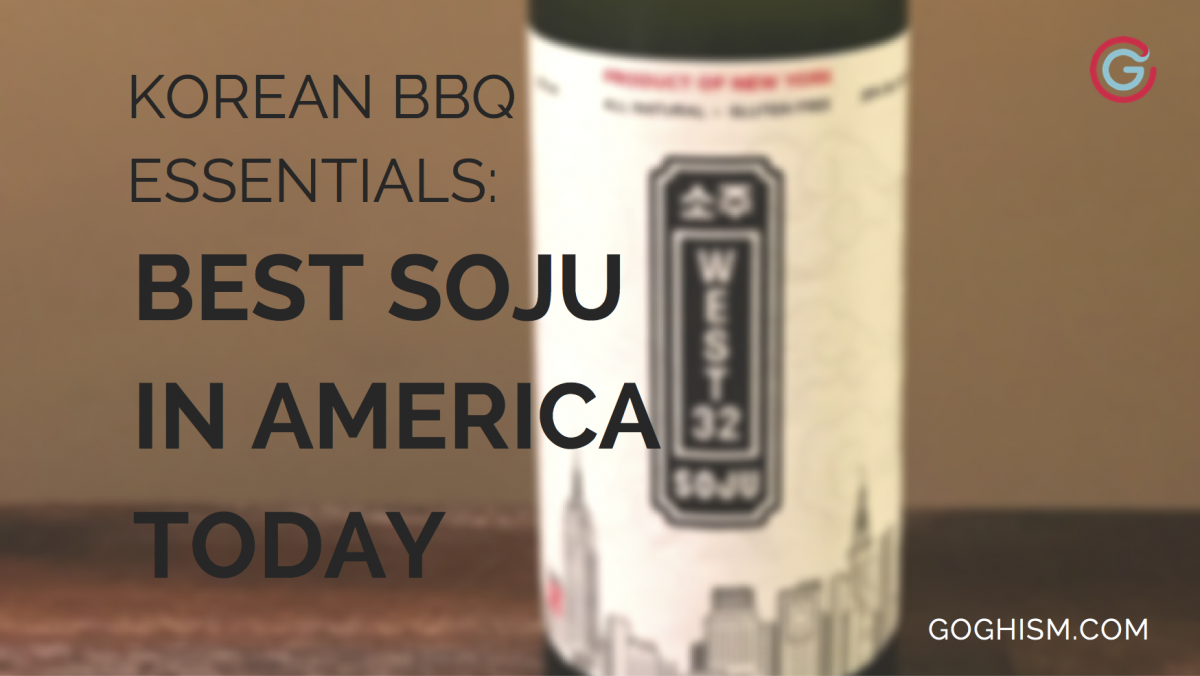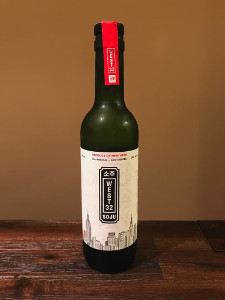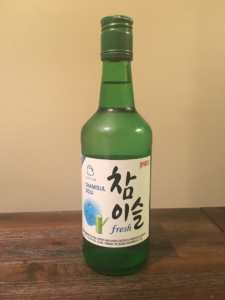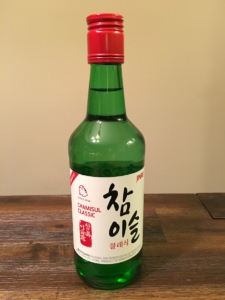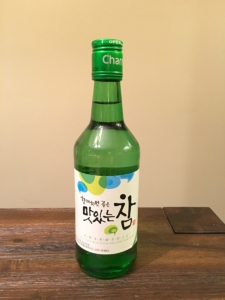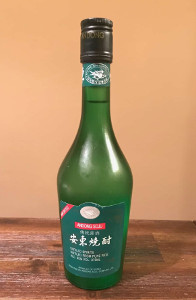PSA: Please read responsibly.
After 32 hours of research, testing, and getting buzzed we have concluded that West 32 Soju is the best soju brand available in stores today. Although the competition was fierce, in the end we couldn’t resist West 32 Soju’s combination of a clean, crisp finish with natural ingredients. For a refreshing and relatively healthier, West 32 Soju is the way to go.
P.S. As an added plus, their packaging is on point.
Editor's Pick:
Slightly edging out Chamisul Fresh for editor’s pick, West 32 Soju pushes the limits with its alcohol content (20%) while retaining a clean and refreshing finish. It’s not as sweet and mild as Chamisul Fresh, but definitely has the smoothest finish out of the group as the taste dissipates more quickly, feeling more crisp as opposed to syrupy. Despite its relatively higher alcohol content, I was surprised by how easy it was to drink as it didn’t hit me like a ton of bricks such as Saan. West 32 Soju is also unique in that it is made in the US and boasts all natural, gluten free, and GMO free ingredients. As such, it is on the pricier end, but on the bright side you might feel a little less guilty.
Runner Up:
Weighing in at a sleek alcohol % of 17.8, Chamisul Fresh, a rice and barley blend, is the lightweight of the group and was our pick for best soju. It has very little aroma even after some intense sniffing (full disclosure, may have gotten some up my nose). While the variations were slight amongst some of the other sojus (in particular Chum Churum), its relatively lighter taste once it hits your lips to the mild finish after its consumption made it a close competition with West 32 Soju.
Other soju tested
In close competition with West 32 Soju and Chamisul Fresh (and my wife’s favorite), Chum Churum weighs in at an alcohol % of 18 and is made from rice. Chum Churum was slightly sweeter than Chamisul Fresh but had a stronger bite to it. While having a stronger bite may not necessarily be a bad thing to some, it wasn’t as enjoyable to sip on compared to Chamisul Fresh and had a more bitter finish.
As the older, bad-ass brother of Chamisul Fresh, Chamisul Classic comes in at a hefty 20.1% (second highest) and a stronger tone. It is slightly sweeter than Chamisul Fresh dispelling the rumors that older brothers are mean. However, in terms of taste, it hit me like a ton of bricks similar to Saan soju. So in terms of having a bigger, bolder (or bitter) taste, Chamisul Classic outweighs most of the other options besides Saan. Nevertheless, it definitely burns a bit more than the rest.
No wonder this was named “mountain.” Saan had the strongest, most bitter taste, and a rough finish. If there was any hint of sweetness to it, it was masked by its strong flavor. In addition, it had a particularly unpleasant smell compared to the other sojus. After the test, my wife told me it reminded her of a mild form of formaldehyde, so I naturally had to agree with her.
To its defense, Saan is definitely a heavy weight, a man’s man, with the highest alcohol content at 21%. It is also made from sweet potato instead of your typical rice or barley that the other sojus are derived from. So in a different reality, if you like sweet potato and want to start yelling and laughing louder… well you have your champion!
Charm Soju is your definite middleweight when you can’t decide on whether to go light or heavy. Taste wise, it is much stronger than Chamisul Fresh and Chum Churum but was not as vodka-like compared to the other two Chamisul Classic and Saan.
While it did have the strongest smell it was also the sweetest out of the five and without a bad, burning finish. Charm contains 19.3% alcohol and is made from rice.
Holy mother of soju what did I get myself into drinking this one. Andong Soju, distilled from pure rice, contains 35% alcohol nearly double the amount in other brands tested. It is common practice for mainstream soju to be diluted and infused with sweeteners to give it a light and easy taste, but Andong Soju is old school and utilizes traditional soju making techniques that result in a strong, clean taste with little to no artificial ingredients. It still has that slight sweetness in the beginning, but this will end on more of a sake note. The vodka like finish that is pretty prevalent with the rest of the pack is surprisingly absent as well. Andong Soju is a surprisingly nice change and has a much deeper tone than one would expect from soju; however, keep that in mind and don’t make the mistake of treating Andong the same as all of the other sojus… unless you’re up for a challenge.
Side note: this is one of the weaker lines of Andong Soju out there with some containing 45-50% alcohol. Cheers!
Why soju?
Soju is good for the soul. If just for a second you can forget about its after effects, you realize that it can increase your Korean vocabulary exponentially as well as improve your singing, to the surprise of everyone at the noraebang (karaoke room). While I am aware that most adult beverages may produce similar effects, soju takes it to another level. Besides the symptoms of invincibility, its relatively low alcohol content makes it a perfect vehicle for drinking games – you won’t get full from it like beer and you won’t get hammered as quickly from it like vodka. Most importantly, it is the classic complement to Korean BBQ. Nothing beats it when you’re grilling massive amounts of meat on a hot plate over fiery charcoal surrounded by good company.
Soju is made from some type of starch and water. It contains approximately 20% alcohol and an 80% chance of having a headache the next morning. It is best served chilled and typically served neat in a shot glass. A bottle (360 mL) contains about the same amount as a can of soda, or about 10 shots, 8 when I’m pouring. Prices range from $5-14 in the U.S, which I thought was pretty awesome until I went to Korea and found out that a bottle is cheaper than water… a blessing and a curse.
What is good soju?
Let’s not beat around the bush here, soju is not really consumed for its taste and is cheap for a reason. While the content is weak enough to drink multiple shots (or bottles), and the taste is mild enough without a chaser, personally, it is a cross between rubbing alcohol and weak, cheap vodka. However, the allure of soju keeps grappling me back in (or perhaps that’s just my semi-alcoholic side talking). Soju cuts through the richness from the Korean BBQ so that you can enjoy your meal longer. Soju also sets the ambience for any situation. It has a magical way of bringing people together, it breaks down language barriers, and cultivates meaningful and memorable relationships with your father-in-law. Most importantly, soju connects you to a culture regardless of your own heritage and allows you to really appreciate the different nuances within.
So what is good soju? There are some technical aspects that makes good soju – chilled with a smooth-er finish. However, good soju really isn’t about the brand. Good soju is about the people you drink with and the memories that you forget with it.
Survey results
| Component | Smell (Odorless - Gasoline) (1-10) | Overall Taste (Spring water - Shot of 151) (1-10) | Sweetness (Chalk - Pooh's Honey) (1-10) | Smoothness (Sand paper - Baby's bottom) (1-10) |
|---|---|---|---|---|
| Chamisul Fresh (참이슬) | 2 | 4 | 3 | 4 |
| Chum Churum (처음처럼) | 2 | 6 | 4 | 2 |
| Chamisul Classic (참이슬) | 2 | 8 | 4 | 1 |
| Saan Soju (산) | 3 | 8 | 2 | 1 |
| Charm Soju (맛있는참) | 4 | 7 | 5 | 3 |
| West 32 Soju | 3 | 5 | 2 | 5 |
| Andong Soju | 5 | 7 | 2 | 6 |
Why trust us?
After eating at Korean restaurants and singing in noraebangs across the country we chose soju brands that are especially common at these establishments. Anything marketed as Soju that comes in a bottle we’ll get. We’re going to leave out the lesser known Seju (세주) for now.
How we chose what to test?
After eating at Korean restaurants and singing in noraebangs across the country we chose soju brands that are especially common at these establishments. Anything marketed as Soju that comes in a bottle we’ll get. We’re going to leave out the lesser known Seju (세주) for now.
What to look forward to
As we encounter other brands of soju, we will continuously update our list. We will be following up this soju post with other soju posts! Included are soju etiquette (yes, it’s a thing), soju drinking games, and flavored soju.

